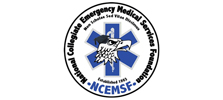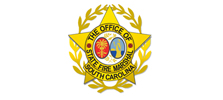Public Access Defibrillation (PAD) Program
The College of Charleston Fire and EMS has initiated a public access to defibrillation (PAD) program on the College of Charleston campus. AEDs are placed in strategic locations throughout the campus in order to provide the optimal response time possible. Training is provided at discounted rates for College of Charleston employees and students.
What's public access to defibrillation?
Public access to defibrillation (PAD) means making AEDs available in public and/or private places where large numbers of people gather or where people who are at high risk for heart attacks live.
What is an AED?
The automated external defibrillator (AED) is a computerized medical device. An AED can check a person’s heart rhythm. It can recognize a rhythm that requires a shock. And it can advise the rescuer when a shock is needed. The AED uses voice prompts, lights and text messages to tell the rescuer the steps to take.
AEDs are very accurate and easy to use. With a few hours of training, anyone can learn to operate an AED safely. There are many different brands of AEDs, but the same basic steps apply to all of them.
What's the AHA position on placement of AEDs?
The American Heart Association (AHA) strongly advocates that all EMS first-response vehicles and ambulances be equipped with an AED or another defibrillation device (semiautomatic or manual defibrillator). The AHA also supports placing AEDs in targeted public areas such as sports arenas, gated communities, office complexes, doctor's offices, shopping malls, etc. When AEDs are placed in the community or a business or facility, the AHA strongly encourages that they be part of a defibrillation program in which persons responsible for using the AED are trained in CPR and how to use an AED.
Why do I need AED training?
Although AEDs are very simple to operate, formal training is always reccomented. An AED operator must know how to recognize the signs of a sudden cardiac arrest, when to activate the EMS system, and how to do CPR. It's also important for operators to receive formal training on the AED model they will use so that they become familiar with the device and are able to successfully operate it in an emergency. Training also teaches the operator how to avoid potentially hazardous situations.
How much does an AED cost?
The price of an AED varies by make and model. Most AEDs cost between $1,500–$2,000.
Can AEDs be used on children?
Children over age 8 can be treated with a standard AED. For children age 8 and under, the AHA recommends the pediatric attenuated pads that are purchased separately.








